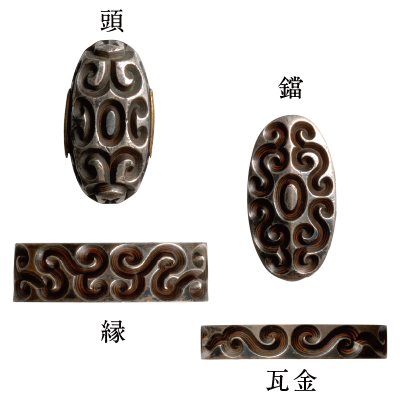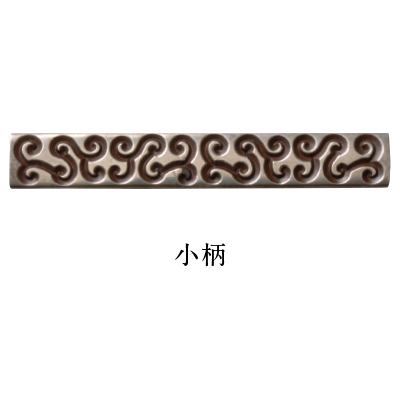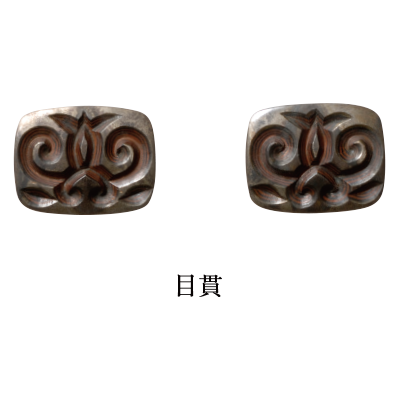Tsuba, fuchi-kashira, kozuka, menuki, kojiri and kawaragane with design of guri scrolls. Unsigned.
Mid-to-late Edo period Silver, Shakudo, Copper
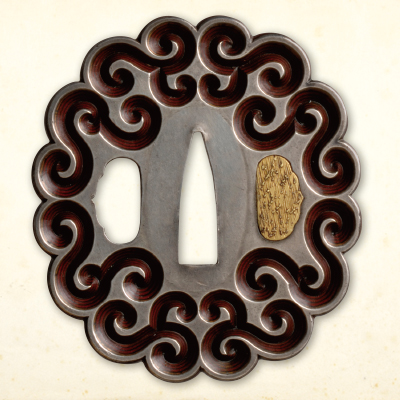
【 Dimensions(mm)】- Tsuba:H 71.0 x W 63.7 x T 4.3 / 95.5g
- Menuki(Left):H 14.9 x W 18.9 x T 2.5 / 2.4g
- Menuki(Right):H 14.9 x W 19.3 x T 2.8 / 2.3g
- Kojiri:H 34.0 x W 18.2 x T 9.9 / 12.7g
- Kawaragane:H 37.8 x W 21.7 x T6.9 / 7.7g
- Kozuka:L 95.8 x W 14.3 x T4.5 / 30.9g
- Fuchi:H 37.2 x W 20.7 x T11.3 / 18.8g
- Kashira:H 32.5 x W 17.8 x T8.9 / 10.1g
- 【 Date of production 】
- Mid-to-late Edo period
- This is an unusual set of guribori clad with silver. Sword hilts made of guribori are very rare, and this is an exceptional piece worthy of mention. One of the tsuba’s hitsuana openings is filled with gold, giving it a refined feel.
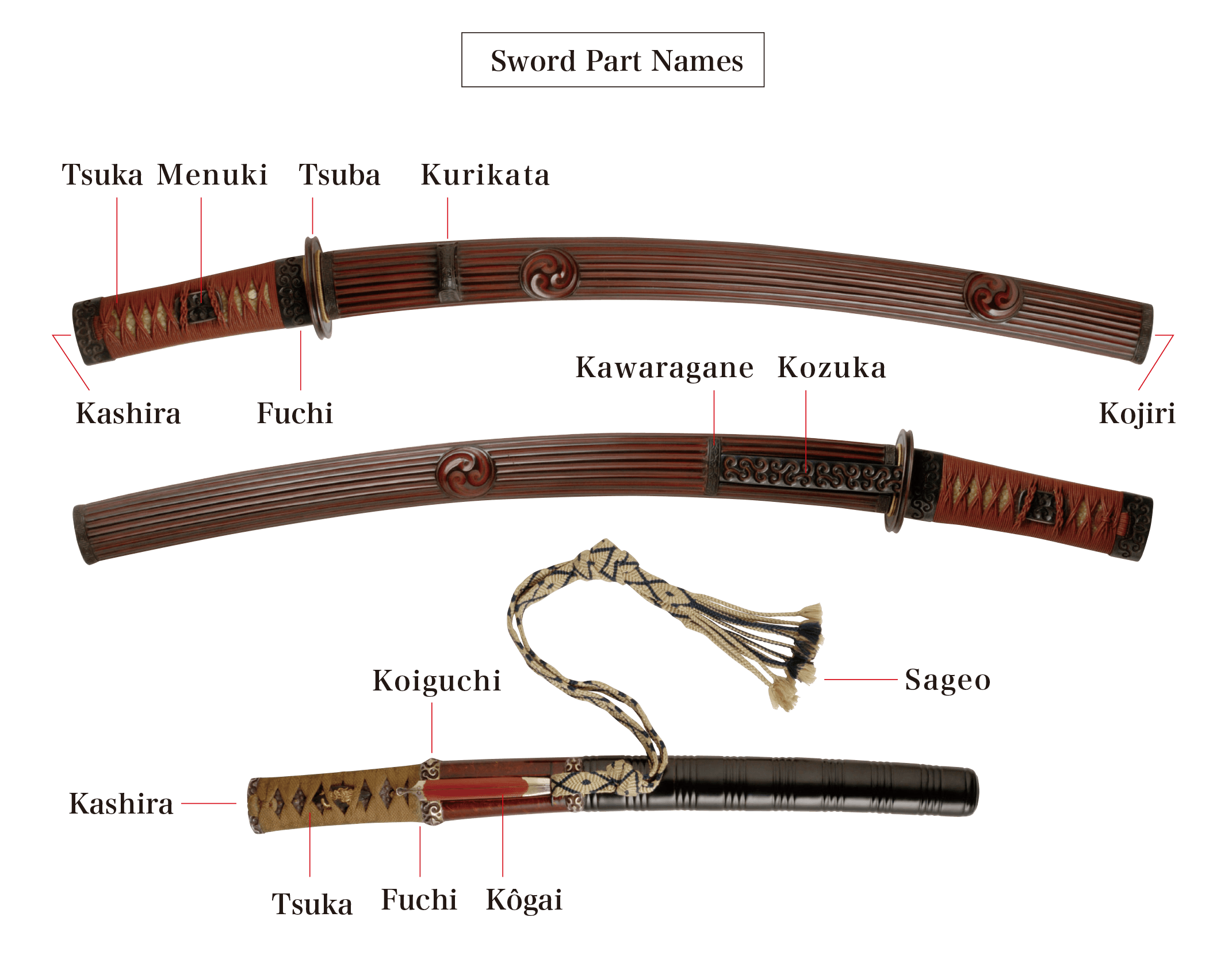
- Tsuka:Sword handle
- Fuchi:Metal collar on sword handle
- Kashira:Metal pommel (or butt cap) at tip of handle
- Menuki:Ornamental rivets on the tsuka. They also prevent the hand from slipping.
- Tsuba:Sword guard fitted between the handle and the blade, to protect the hand holding the handle
- Kurikata:Fitting near the sayaguchi (opening of scabbard) for attaching the sageo
- Kojiri:Ornamental fitting at the tip of the saya (scabbard)
- Kôgai:A utensil shaped like a chopstick that fitted into the scabbard and was used to tie back hair
- Kozuka:The handle of a small knife that fitted into the scabbard, or the small sword itself
- Kawaragane:Fittings attached to the part where the kozuka was stored
- Koiguchi:The opening, or mouth, of the scabbard
- Sageo:The cord used to attach the sword to the obi
